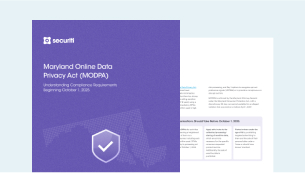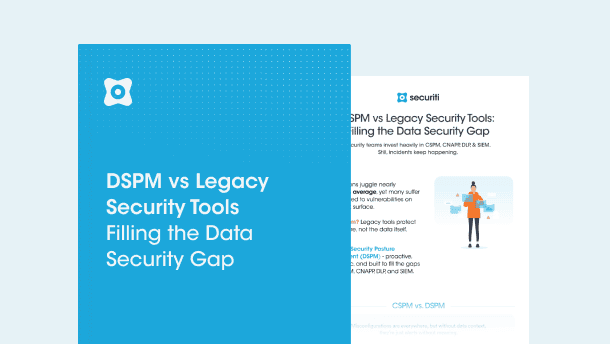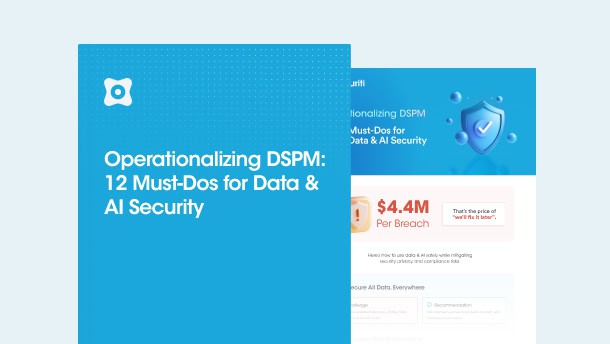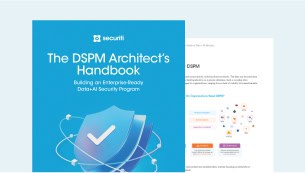As data flows across the data-driven digital landscape, so does the risk of data exposure. Over the last two years, over 60% of companies have experienced a data breach involving sensitive data. With the average total cost of a data breach costing businesses $4.88 million per incident, adequately managing, classifying, and protecting sensitive data has never been more critical.
Despite this staggering figure, most organizations struggle with a fundamental step: sensitive data classification.
Determining what constitutes sensitive data and strategically implementing classification and categorization practices can be the difference between successful data security posture management and an expensive, reputation-damaging data security incident.
This comprehensive guide will explore the fundamentals of sensitive data classification, why it matters, how it is the foundation for any effective data protection strategy, and how Securiti Sensitive Data Intelligence (SDI) helps organizations classify sensitive data.
What is Sensitive Data?
Although the exact definition of sensitive data varies across regions and laws, it is any information that, if exposed, poses a high risk to individuals. Therefore, sensitive data must be protected from unauthorized access to safeguard an individual's or organization's privacy, security, or interests.
Sensitive data, for instance, is defined by the EU's GDPR as personal data that reveals an individual’s racial or ethnic origin, political opinions, religious or philosophical beliefs, trade union membership, genetic data, biometric data processed solely to identify an individual, health data, data about an individual’s sexual orientation or life, or data about their sex life.
Types of Sensitive Data
There are various types of sensitive data, including:
- Personal information or personally identifiable information (PII) – names, addresses, social security numbers, or financial details.
- Protected health information (PHI) – medical records, health insurance information, patient histories, etc.
- Financial information – credit card numbers, bank account details, credit histories, and tax information.
- Confidential business information such as trade secrets or proprietary data, etc.
- Biometric data – fingerprints, voice prints, facial recognition data, or retinal scans.
Why is it Essential to Protect Sensitive Data?
Protecting sensitive data is crucial to preventing unauthorized access, identity theft, fraud, and data breaches, which can result in financial loss, legal consequences, and reputational damage. Most importantly, sensitive data protection is necessary to avoid noncompliance penalties under most data privacy laws, such as the EU’s GDPR, CCRA/CPRA, etc.
Failing to protect sensitive data under the GDPR can be a catastrophic move for businesses, as fines under the GDPR can reach up to €20 million or 4% of annual global turnover, whichever is higher. Similarly, U.S. regulations like the CPRA, where fines range from $2500 to $7500 per violation, and HIPAA, where fines can reach up to $1.5 million per violation.
Additionally, noncompliance can lead to legal actions, operational disruptions, and reputational damage, necessitating organizations to adopt robust security measures that help mitigate evolving risks and ensure effective data management and compliance with regulations.
What is Sensitive Data Classification?
Sensitive data classification is a comprehensive process of identifying, categorizing, and labeling data based on its level of sensitivity and the potential impact of sensitive data exposure. This classification helps organizations determine the appropriate security measures to protect data types, such as personal, financial, or proprietary information.
It enables organizations to align with regulatory requirements, strengthening their data security posture management. Additionally, it helps identify shadow data (unknown or unauthorized sources) and dark data (existing but uncontextualized information), improving overall data management.
How to Classify Sensitive Data
Sensitive data classification requires a systematic approach to identifying, categorizing, and labeling data based on its sensitivity level and the potential impact of exposure. Typically, the process involves manual, automated, or hybrid approaches.
| Approach |
Description |
Pros |
Cons |
| Manual Data Classification |
Relies on human intervention to assess and categorize data. Allows for recognizing contextual nuances but can be time-consuming, error-prone, and difficult to scale. |
Recognizes subtle contextual clues, offers human insight. |
Time-consuming, error-prone, difficult to scale. |
| Automated Data Classification |
Uses software and algorithms to categorize data quickly and efficiently, leveraging AI and machine learning for improved accuracy. Scalable and consistent, handling large volumes of data at high speed. |
Highly efficient, scalable, consistent, and fast. |
Lacks human insight, might misinterpret context in certain cases. |
| Hybrid Data Classification |
Combines automated tools for initial classification with human review to refine and ensure context-specific accuracy, balancing efficiency and precision. |
Balances speed with human oversight, improving accuracy. |
Still requires human intervention, but less so than fully manual. |
Here are the steps to classify data as sensitive:
Data Asset Discovery to Identify the Data Types
Data asset discovery is the initial phase in data classification, focusing on identifying and cataloging all data assets scattered across an organization, whether locally or cross-border.
Start by defining the distinct categories of data, such as personal information, financial records, intellectual property, and health information, among others, to determine whether the data falls under any regulatory standards, such as GDPR, HIPAA, or PCI DSS.
Data Classification & Categorization to Assess Sensitivity Levels
Determine the data's sensitivity by considering the possible consequences of its exposure. Typical levels include:
- Public: Information that, if exposed, poses no risk (e.g., public-facing website content).
- Internal: Information not available to the general public but presenting minimal risk if disclosed (e.g., internal policies).
- Confidential: Information about customers or employees that, if disclosed, might represent a moderate risk.
- Restricted: Highly sensitive information, such as social security numbers or trade secrets, that, if disclosed, might have serious consequences.












































